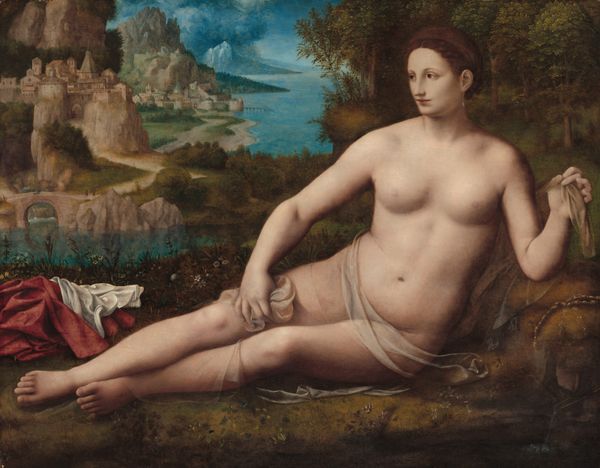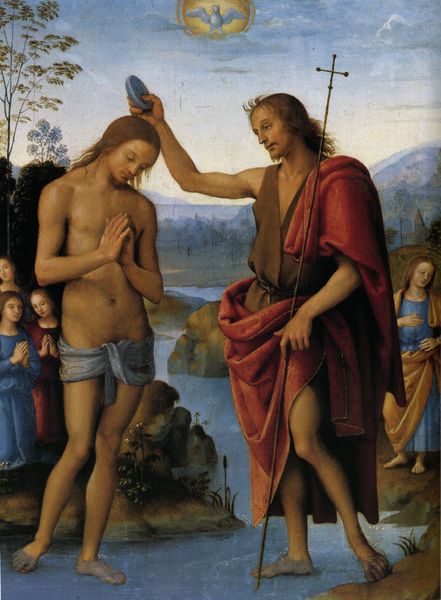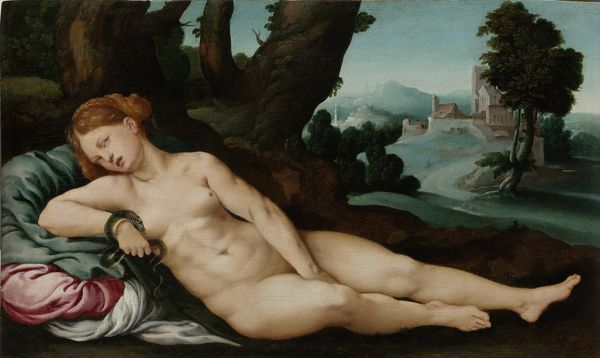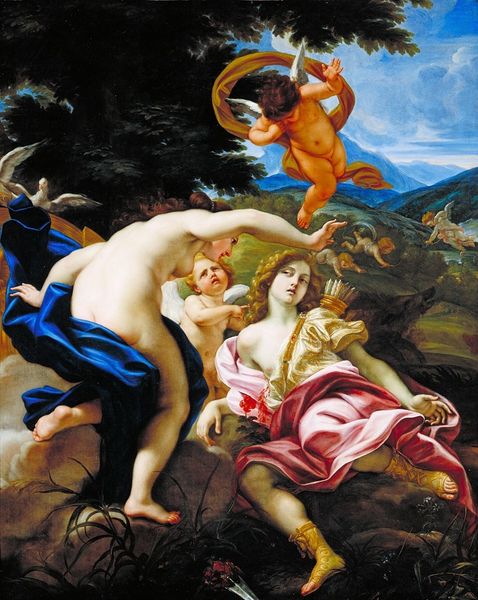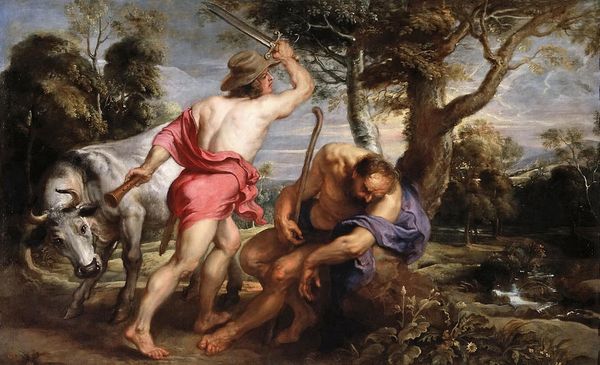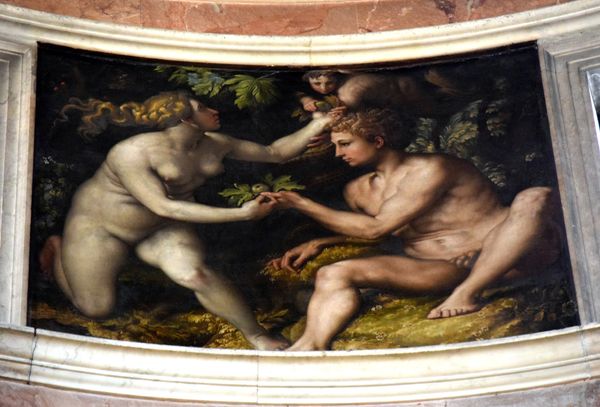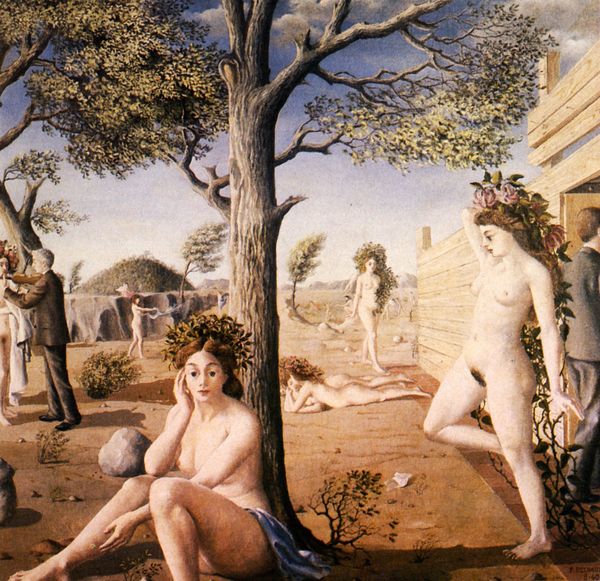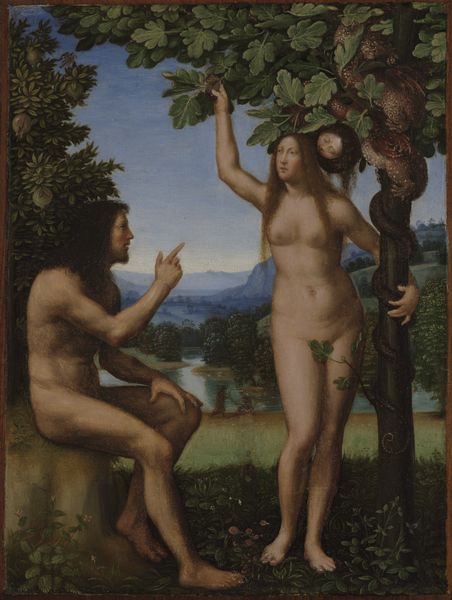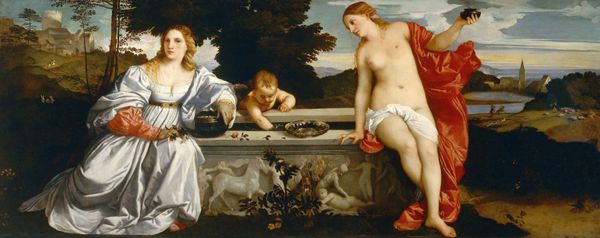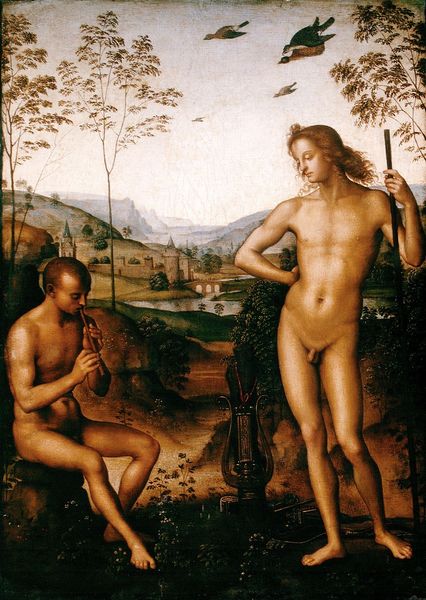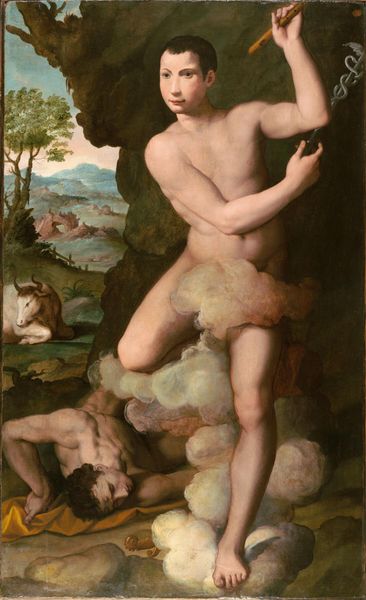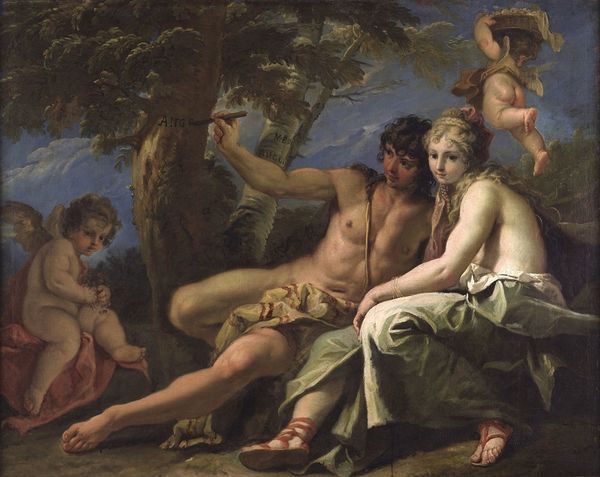
Dimensions: 159 x 189 cm
Copyright: Public domain
Curator: This is Jan van Hemessen's "Allegorical Scene," an oil painting created around 1550. What are your first thoughts? Editor: It strikes me as both peaceful and melancholic. There's a gentleness in the way the figures are positioned in this Renaissance landscape, yet their expressions suggest a certain wistfulness, don't you think? Curator: Absolutely. Notice how the composition is structured? The figures form a triangular shape, grounded by the earthy tones of the rock and balanced by the pale, ethereal background. The landscape itself is segmented: each plane establishes an artificial hierarchy and contrast. Editor: I'm drawn to the laurel wreath. It immediately evokes associations with Apollo and Daphne and implies ideas of status and achievement but could also be signaling tragedy or mourning. Do we know definitively who these figures represent? Curator: Van Hemessen employs symbolic language of the Italian Renaissance. The lyre could be associated with harmonic beauty, perhaps referring to Platonic philosophy that describes an ordered cosmos. Also note the way each figure occupies one another's space – there is no formal distance here. It's very subtle. Editor: Their nearness creates a psychological tension – particularly her exposed upper torso against his somber dress – that almost belies the calm visual presentation. The scene beyond is no less fascinating. Note the presence of laboring workers, moving away from us toward the city at the edges of the plane. Do they act as some moral or social allegory? Curator: Possibly. Perhaps, it acts to reinforce the sense of stability of its construction. Editor: It is as if the painting exists in two planes – foreground as pure thought and the background a world where even allegory bows to reality. I appreciate seeing Hemessen wrestle with symbolic representation in his own voice here. Curator: Yes, it invites viewers to unpack layers of Renaissance humanist thinking through visual cues and pictorial arrangements. Editor: Precisely. These kinds of puzzles and tensions really solidify its staying power.
Comments
No comments
Be the first to comment and join the conversation on the ultimate creative platform.
